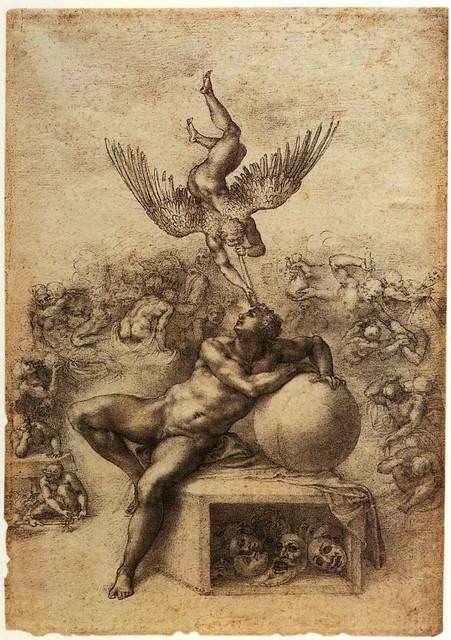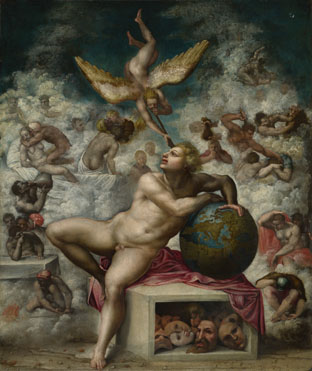2008 (1762)
2009 (1498)
2010 (796)
2011 (759)
2012 (633)
2013 (449)
2014 (575)
2015 (323)
2016 (276)
2017 (470)
2018 (127)
2023 (1)


Michelangelo Buonarroti (1475-1564). The Dream of Human Life, (c. 1533). Black chalk, 39.4 x 27.7 cm. The Courtauld Gallery, London.
‘Drawings the like of which have never been seen…’— Giorgio Vasari, 1568
Michelangelo’s masterpiece The Dream (Il Sogno) has been described as one of the finest of all Renaissance drawings, and it is amongst The Courtauld Gallery’s greatest treasures. Executed in c. 1533 when Michelangelo Buonarroti (1475-1564) was at the height of his career, it exemplifies his unrivalled skill as a draughtsman and his extraordinary powers of invention. Michelangelo’s Dream examines this celebrated work in the context of an exceptional group of closely related drawings by Michelangelo, as well as original letters and poems by the artist and works by his contemporaries.
The Dream
http://www.artdesigncafe.com/Michaelangelo-Buonarroti-Courtauld-2010

The Dream of Human Life
after 1533, After Michelangelo, National Gallery
周末去聽米開朗基洛的《 Manchester Madon年a 》卻碰到了他的這幅畫, 那健美的男子抱著地球,抬頭仰望這天使 環繞著他是人類六種原罪(sin) : 他坐在像一個木偶表演的盒子上,這幅畫把赤裸的人那些黑暗麵暴露無遺。
這幅畫是根據 Michelangelo的原作上畫的, 和朋友討論的時候小女兒也湊過來看, 俺故意擋著不讓她看, 不想讓她這麽小就知道人的醜惡的一麵
相比之下還是米開朗基洛的素描更美,人和天使有更多對視和交流 無視他周圍的同類的暴力和縱欲,美男子麵帶微笑和信心。
米開朗基洛很高壽, 幾乎快九十高齡, 他是藝術家, 他對人有更多透視和了解, 那個年代的藝術大師很多都是全才: 繪畫音樂雕塑詩歌數學宗教, 也許也是因為如此, 他們的藝術是那麽深刻,幾百年過去了, 依然照耀啟發著後人。
改日去Coutauld Gallery 去看原作, 不一定擺出來



